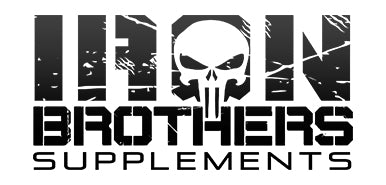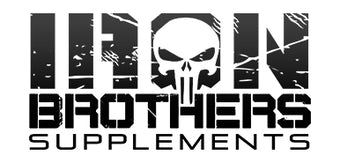We’ve all heard someone claim that they can eat what they want because they hit the gym every day. And that may be true for them, but have you stopped to consider how hard it is to burn calories compared to how easy it is to eat them? In the same three minutes it takes to consume 800-1,000 calories, an average person is only able to burn around 40-45. Those numbers alone hint at the fact that it’s extremely difficult to live on cheeseburgers and still have killer abs. Can you outwork a bad diet? Well, that depends on a number of factors.
Calories In vs Calories Out
If you look at this logically, as long as you balance your calories consumed with your calories expended then you can still make gains, right? Well sort of, but it’s not quite as straightforward as that.
On the whole, scientists and nutritionists agree that if you consume more calories than you use to sustain your basal metabolic rate and any additional daily activity, those extra calories will be stored as fat and you’ll put on weight.
On the flipside, if you consume fewer calories than you need to maintain basal metabolism and daily activities, you’ll lose weight. This is because your body will tap into its reserves of adipose fat. But, if we look at this from a muscle building perspective, undereating can be as damaging to your body as overeating. Creating too much of a calorie deficit can see you lose fat and muscle mass at the same time. So if you want to ensure that you only lose fat, skipping meals, doing a dash diet, or living on Diet Coke isn’t the way to do it.
To ensure that you’re consuming the correct number of calories to lose fat without sacrificing muscle mass, enter your details into an online maintenance calorie calculator then deduct 25%. Drop below this number and you’re going to undo all of your hard work in the gym.
Good and Bad Calories
The calories in vs calories out argument needs to take in to account the types of food that are making up your calorie intake. After all, there are approximately 3,500 calories in one pound of fat and 186 in a pound of carrots, which makes it abundantly clear that not all foods were created equally.
Even when the amount of calories is equal, there’s a significant difference in how they’ll make you feel. Take a portion of broccoli and two tablespoons of chocolate chips, for example. There are 100 calories in both, but they’ll affect your energy levels, mood, and appetite in completely opposite ways. How? Even though they’re delicious, binging on chocolate chips will leave you tired, hungry, and low. This can factor into how successfully you exercise, and therefore how many calories you actually burn during a workout.
If you’re focused on getting the most out of every gym session, healthy diet plans are the only diets worth paying notice to.
What are the Best Exercises to Outwork a Bad Diet?
Many exercise machines actually inflate the number of calories that they help you burn, so this is something to be aware of if you include cardio in your workouts. Treadmills can get it wrong by up to 13%, and stationary bikes can be off by 7% which could seriously mess with your maintenance calorie calculations.
The following figures are how many calories you can actually burn with different types of exercises. The lower ranges account for an average person weighing 125 lbs., and the upper ranges are for an average 185 lb. person.
- Treadmill – you can burn 270-400 calories in 30 minutes running an 11.5-minute mile.
- Stationary bike – moderate cycling burns 210-311 calories per 30 minutes, and a high-intensity spin class burns between 315 and 466 in the same time frame.
- HIIT (High-Intensity Interval Training) – mixing cardio with low-intensity moves can burn between nine and 17 calories per minute, plus you’ll burn calories after the workout thanks to the afterburn.
- Weight lifting – 30 minutes of vigorous weight lifting will burn 90-133 calories. But the more muscle you build the more calories your body burns while it’s resting, so pumping iron can actually be one of the most effective forms of exercises.

Diet Tips for Fat Loss and Muscle Gain
Diet plans that work all tend to have something in common: they are healthy, natural, and balanced. If you want to ensure that your diet doesn’t undo all of your hard work in the gym, here’s what you should be eating:
- Aim for 4-6 small meals per day. Cut portion sizes down to around a fistful.
- Fill up on lean protein such as lean beef, salmon, and egg whites.
- Avoid caffeine and soda and stick to water instead. Limit your alcohol intake, too.
- Go for high-fiber carbs like oatmeal and whole wheat pasta and bread.
- Choose healthy fats like extra virgin olive oil.

We recommend the Iron Brothers - Thermogenic Fat Burner along with the article's useful tips and tricks on exercise and diet.
Get it from our official Online Store now!
Conclusion
To answer the original question, can you outwork a bad diet, the answer technically is yes. If you consume more than you expend, you will put on weight pretty much without exception, but if you create a calorie deficit you’ll probably lose scale weight. But, creating that deficit by eating mountains of junk food and then hitting the gym to work it back off is inefficient and detrimental to your long-term fitness goals. And, eating way too little is also a terrible idea as it can result in losing hard-earned muscle mass as well as fat.
If you were hoping we’d reveal a way of eating chocolate all day long while miraculously losing fat and gaining muscle, we’re sorry to disappoint. The only tried and tested way to reduce your percentage of body fat and gain muscle mass is to eat a healthy diet with around a 25% calorie deficit. How do you manage your calories in vs calories out? Let us know in the comments.



